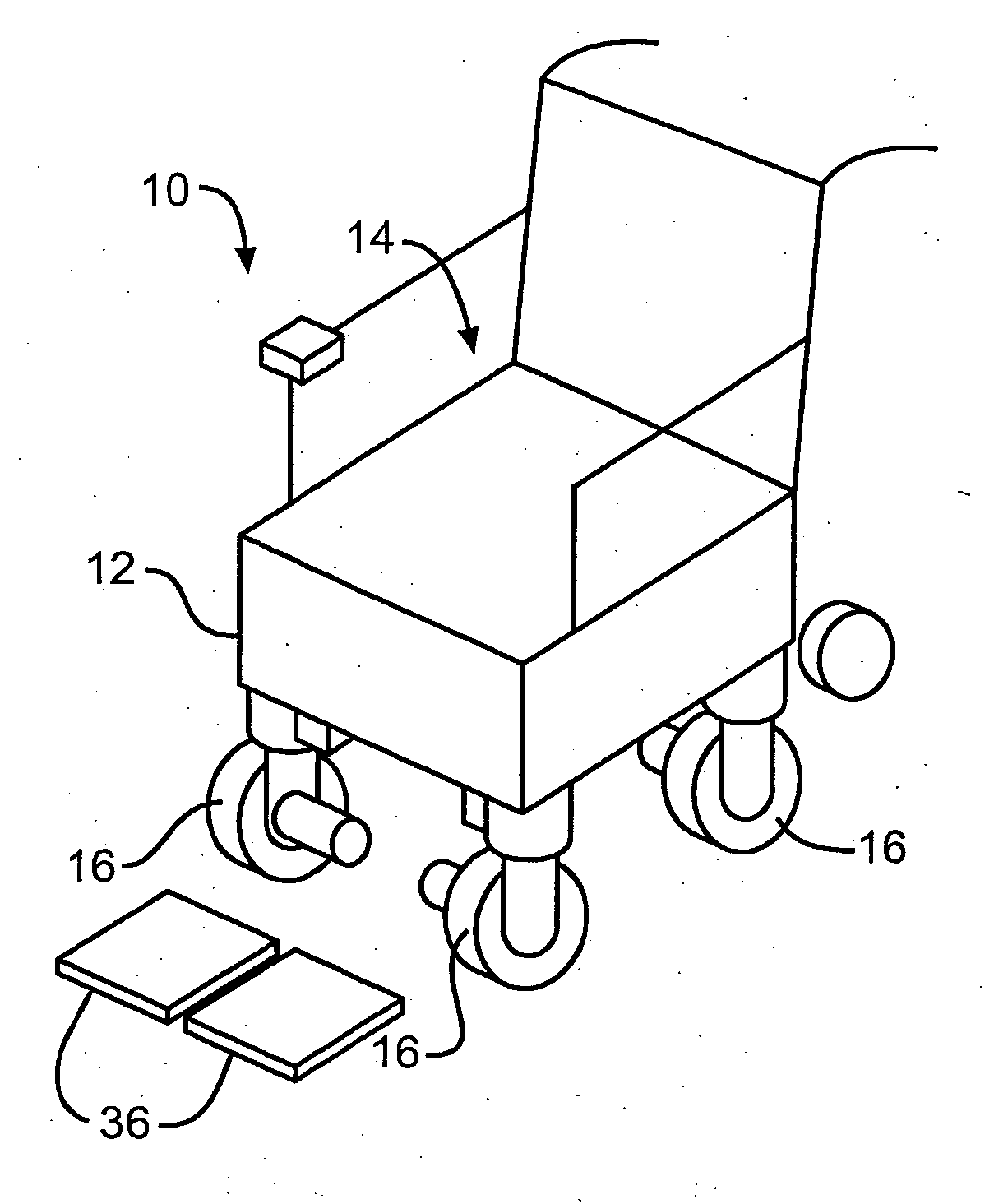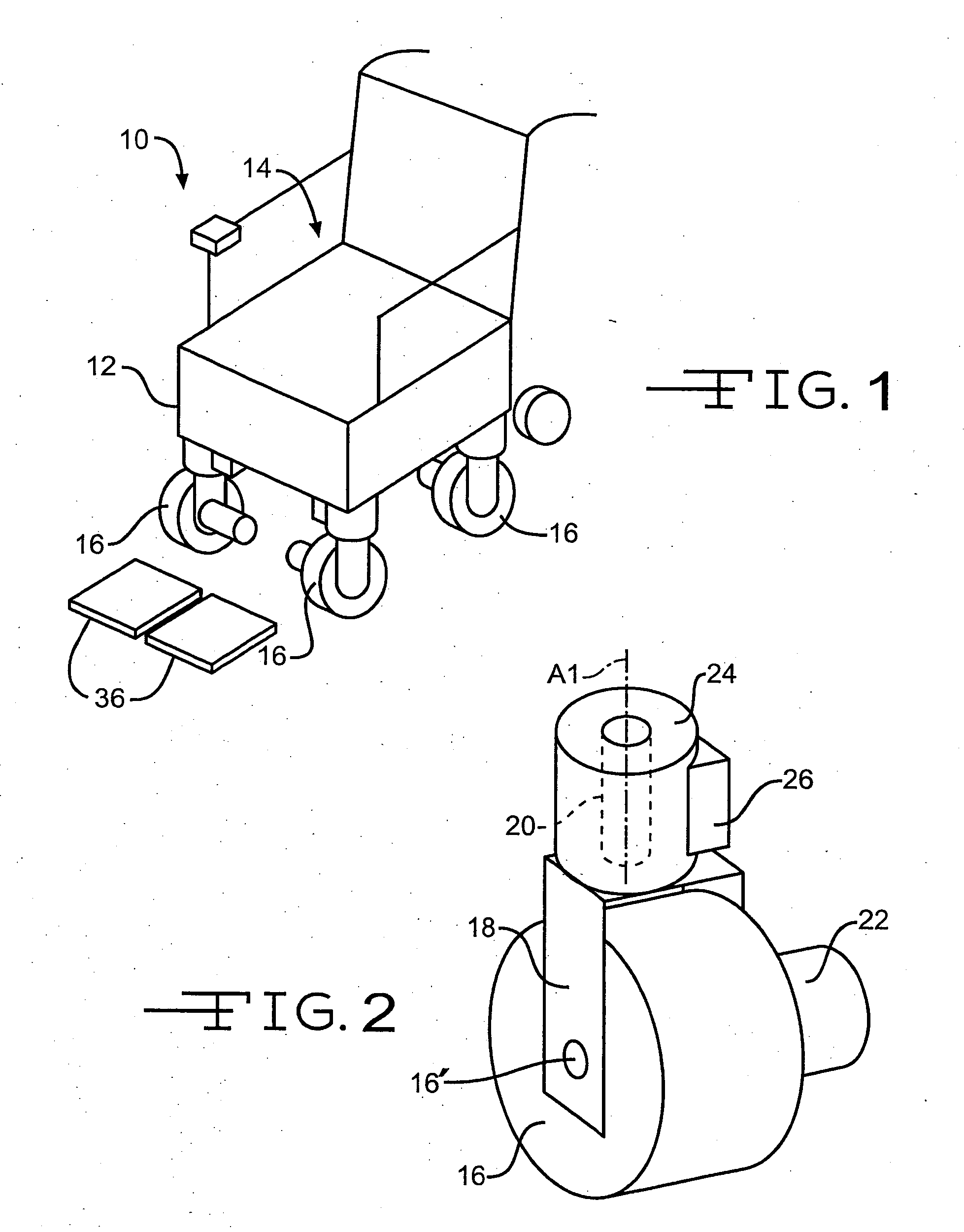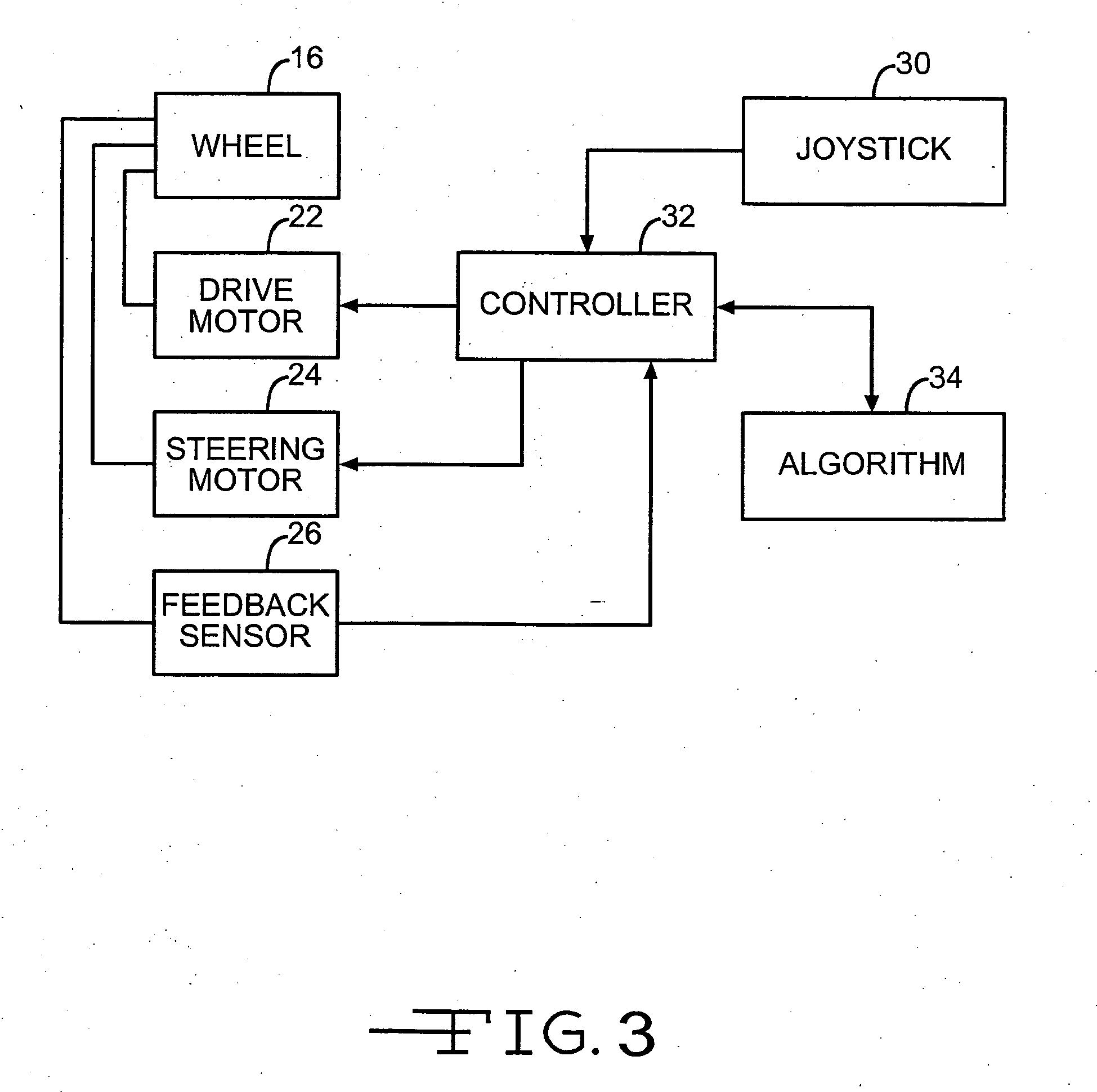Wheelchair
a technology for wheelchairs and wheelchairs, applied in the direction of wheelchairs/patient conveyances, nursing beds, transportation and packaging, etc., can solve the problems of poor traction, poor traction, and spinout of configurations, and achieve the effect of improving traction and traction
- Summary
- Abstract
- Description
- Claims
- Application Information
AI Technical Summary
Problems solved by technology
Method used
Image
Examples
Embodiment Construction
[0020] Referring now to the drawings, there is illustrated in FIG. 1 a powered wheelchair 10. The wheelchair 10 comprises a frame 12, a seat 14 for supporting a wheelchair occupant, and a plurality of wheels 16 that are adapted to support the frame 12 for movement relative to a supporting surface. Each wheel 16 resembles a caster. That is to say, each wheel 16 is supported for rotational movement about a respective axle 16′ by a fork 18, as clearly shown in FIG. 2. Each fork 18 is supported for rotational movement about a vertical axis A1, which is coincident with a spindle or stem 20, which is preferably centered above the wheel 16, to allow the wheel 16 to steer in the desired direction. At least one wheel 16, and most preferably each wheel 16, is powered by a drive motor 22, such as an in-wheel or near wheel motor, or similar prime mover for propulsion of the wheelchair 10. The motor 22 is situated near the fork 18 and allows the wheel 16 to rotate 360 degrees about the axis A1 t...
PUM
 Login to View More
Login to View More Abstract
Description
Claims
Application Information
 Login to View More
Login to View More - R&D
- Intellectual Property
- Life Sciences
- Materials
- Tech Scout
- Unparalleled Data Quality
- Higher Quality Content
- 60% Fewer Hallucinations
Browse by: Latest US Patents, China's latest patents, Technical Efficacy Thesaurus, Application Domain, Technology Topic, Popular Technical Reports.
© 2025 PatSnap. All rights reserved.Legal|Privacy policy|Modern Slavery Act Transparency Statement|Sitemap|About US| Contact US: help@patsnap.com



